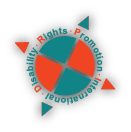Introduction
Objectives of the study
In collaboration with partner organizations of persons with disabilities around the world, the Disability Rights Promotion International (DRPI) project5 developed the assessment tool used in this study. The tool is designed to monitor the human rights of persons with disabilities at the systemic level, that is, at the level of existing laws, policies and programmes, using the principles and rights established in the United Nations Convention on the Rights of Persons with Disabilities (CRPD) and other major international human rights treaties, as benchmarks.
- Note #5
- See the project website at Disability Rights Promotion International
- Return
A major goal of the study is to identify and draw attention to the most critical gaps and deficiencies in legislative and policy frameworks at the national level in protecting and promoting the human rights of persons with disabilities and to make recommendations to change and improve the existing legislative and policy framework and to advance the human rights of persons with disabilities in countries around the world.
This study will be useful for many entities. It will serve as a guide in the research activities undertaken in the context of the DRPI. project. It will also be of interest to organizations of persons with disabilities (DPOs) working to promote the rights of persons with disabilities in a particular country. DPOs can use the information to advocate for change. Similarly, donor organizations committed to improving the situation of persons with disabilities around the world will find monitoring results useful in deciding which countries are in greatest need of support. Finally, government agencies are an important target for the information collected since they are ultimately in the best position to make the changes to laws, policies and programs called for by the assessment tool.
Scope and Limitations of the Study
The Monitoring Team was comprised of a Lead Monitor, an Assistant Monitor and three Technical Support Assistants/Researchers. All team members had the connections and skills to access the necessary data and significant exposure to human rights issues impacting persons with disabilities, with some members having personal experience of disability. In terms of research and monitoring experienced, the members of the team have the exposure to a wider scope of fields.
The project was completed over a period of one month. A regular system to report on progress of individual members was set. Activities involved considering data for incorporation; interviews with relevant government and non-government officials; formal and informal verifications; and further clarifications and updates of the movement particularly relative to laws and policies, in terms of further revision of the study.
Interpretations of various data were done via consultations among the members of the Team. On legal and Constitutional issues, the Team consulted with a lawyer who is also a mother of a member of a person with a disability. Telephone and personal consultations with relevant government and non-government groups were also conducted.
Actual experiences of persons with disabilities relative to the issues incorporated were taken from newspaper items, personal knowledge and involvement of the members of the team to the issues and cases being studied, and interviewed. Records of gathered data were also examined for verifications of the correctness of its content. Internet and email communications were utilized to minimize face to face meetings and maximize the use of research time.
A central point of communication was established to prevent confusion and duplication of instructions and efforts.
